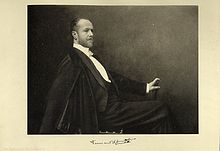Symbolism. A loosely organized movement in literature and the visual arts, flourishing c.1885–c.1910, characterized by a rejection of direct, literal representation in favour of evocation and suggestion. It was part of a broad anti-materialist and anti-rationalist trend in ideas and art towards the end of the 19th century and specifically marked a reaction against the naturalistic aims of Impressionism. Symbolist painters tried to give visual expression to emotional experiences, or as the poet Jean Moréas put it in a Symbolist Manifesto published in Le Figaro on 18 September 1886, ‘to clothe the idea in sensuous form’. Just as Symbolist poets thought there was a close correspondence between the sound and rhythm of words and their meaning, so Symbolist painters thought that colour and line in themselves could express ideas or feelings. Symbolist critics were much given to drawing parallels between the arts, and Redon's paintings, for example, were compared with the poetry of Baudelaire and Edgar Allan Poe and with the music of Claude Debussy. Many painters were inspired by the same kind of imagery as Symbolist writers (the femme fatale is a common theme), but Gauguin and his followers (see Synthetism) chose much less flamboyant subjects, often peasant scenes. Religious feeling of an intense, mystical kind was a feature of the movement, but so was an interest in the erotic and the perverse—death, disease, and sin were favourite subjects. Stylistically, Symbolist artists varied greatly, from a love of exotic detail to an almost primitive simplicity in the conception of the subject, and from firm outlines to misty softness in the delineation of form. A general tendency, however, was towards flattened forms and broad areas of colour—in tune with Post-Impressionism in general. By freeing painting from what Gauguin called ‘the shackles of probability’ the movement helped to create the aesthetic premisses of much 20th-century art. Although chiefly associated with France, Symbolism had international currency, and such diverse artists as Burne-Jones, Hodler, and Munch are regarded as part of the movement in its broadest sense. Symbolist sculptors include the Norwegian Gustav Vigeland and the Belgian Georg Minne (1866–1941).
IAN CHILVERS. "Symbolism." The Oxford Dictionary of Art. 2004. Retrieved June 06, 2012 from Encyclopedia.com: http://www.encyclopedia.com/doc/1O2-Symbolism.html
| Fernand Khnopff | ||||
|---|---|---|---|---|
 |
||||
| Birth name | Fernand Edmond Jean Marie Khnopff | |||
| Born | 12 September 1858 Grembergen, Belgium |
|||
| Died | 12 November 1921 (aged 63) Brussels, Belgium |
|||
| Nationality | Belgian | |||
| Field | Painter, Sculptor, Designer | |||
| Training | Xavier Mellery Académie Royal des Beaux-Arts, Brussels Académie Julian, Paris |
|||
| Movement | Symbolism | |||
| Works | Des Caresses | |||
| Awards | Commander in the Order of Leopold Officer of the Légion d'Honneur | |||
Fernand Khnopff: (12 September 1858 – 12 November 1921) was a Belgian symbolist painter. In 1881, he presents his works to the public for the first time at the "Salon de l'Essor" in Brussels. The critics' appraisal of his work is very harsh, with the exception of Emile Verhaeren who writes a commending review. Verhaeren would remain a lifelong supporter and would write the first monography of the painter. In 1883, he was one of the founding members of the group Le Groupe des XX. Khnopff exhibited regularly at the annual "Salon" organised by Les XX.



Hiç yorum yok:
Yorum Gönder